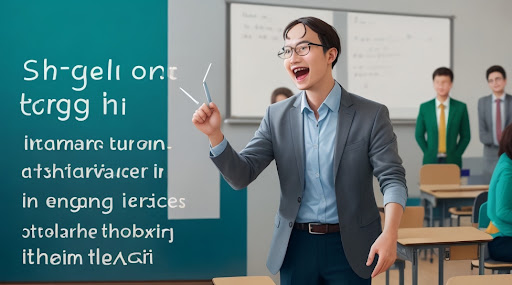Introduction:
In the world of language and
communication, the structure of sentences is a canvas upon which writers and
speakers craft their messages. Join us on a journey of linguistic
transformation as we delve into the intriguing realm of sentence structure. In
this exploration, we'll uncover the power of simplicity and complexity as we
transition seamlessly between simple and compound sentences. Whether you're a
seasoned wordsmith seeking to enhance your writing or a curious language
enthusiast eager to unravel the secrets of sentence manipulation, this journey
promises to unlock a world of expression and creativity. Let's embark on the
adventure of "Transforming Sentence Structure: Simple to Compound and
Back," where words evolve, ideas flourish, and communication reaches new
heights."
Here are 40 different simple sentences with various tense
structures:
Present Simple Tense:
1. She
sings beautifully.
2. They
eat lunch at noon.
3. He
walks to school every day.
4. The
sun rises in the east.
5. I
work as a teacher.
Past Simple Tense:
6. She
visited Paris last summer.
7. They
watched a movie last night.
8. He
finished his book yesterday.
9. We
traveled to Italy last year.
10.
She baked cookies yesterday.
Future Simple Tense:
11.
I will visit my grandparents next
weekend.
12.
They are going to the beach
tomorrow.
13.
She will start her new job soon.
14.
We are attending the conference next
month.
15.
He plans to read that book.
Present Continuous
Tense:
16.
She is reading a book.
17.
They are playing soccer in the park.
18.
I am working on a report.
19.
He is cooking dinner.
20.
We are studying for the exam.
Past Continuous Tense:
21.
She was studying all night.
22.
They were hiking in the mountains.
23.
I was reading a novel.
24.
We were watching a movie.
25.
He was fixing the car.
Future Continuous Tense:
26.
She will be traveling to Europe next
summer.
27.
They will be working on the project
all day.
28.
I will be attending a seminar next
week.
29.
We will be moving to a new house
soon.
30.
He will be studying for his exams
all weekend.
Present Perfect Tense:
31.
She has finished her homework.
32.
They have seen that movie before.
33.
I have never been to Asia.
34.
We have just arrived at the airport.
35.
He has already eaten dinner.
Past Perfect Tense:
36.
She had already left when I arrived.
37.
They had finished the project before
the deadline.
38.
I had read the book before.
39.
We had visited that museum on our
last trip.
40.
He had just turned off the lights.
How to Identify a compound sentence:
In
the world of grammar and language, sentences are the building blocks that
convey meaning, but not all sentences are created equal. Among the many
sentence types, the compound sentence stands out as a versatile and powerful
way to express complex ideas. However, identifying a compound sentence amidst
the various sentence structures can be challenging for many. In this article,
we will delve deep into the intricacies of compound sentences, equipping you
with the knowledge and skills to identify them confidently.
I.
Understanding the Basics
Before
we can identify a compound sentence, it's essential to grasp the fundamental
components of sentences and sentence structure.
1.
The Simple Sentence: A
simple sentence contains a single independent clause and expresses a complete
thought. For example, "She sings."
2.
The
Independent Clause: An independent clause, also known
as a main clause, can stand alone as a sentence. It consists of a subject and a
verb and expresses a complete thought. For instance, "He enjoys playing
the piano."
II.
What Is a Compound
Sentence?
A
compound sentence is a sentence structure that combines two or more independent
clauses. These clauses are linked together using coordinating conjunctions
(e.g., and, but, or, nor, for, so, yet) or semicolons. The purpose of a
compound sentence is to show relationships between ideas, add complexity to
your writing, and create flow.
III.
Identifying a Compound
Sentence
Now
that we have the basics down, let's explore how to identify a compound sentence
accurately:
1.
Look for Coordinating Conjunctions: The most common way to identify a compound sentence is by
spotting coordinating conjunctions. These words connect independent clauses and
signal a relationship between them. For example:
o He likes to swim, and she prefers to hike.
o I wanted to go to the concert, but the tickets were sold
out.
2.
Use of
Semicolons: In some cases, a compound sentence
may use semicolons instead of coordinating conjunctions to link independent
clauses. Here's an example:
o She woke up early; the sunrise was breathtaking.
3.
Check for Commas: Commas are often used in compound sentences, but their
presence alone does not make a sentence compound. They can also appear in
complex sentences or lists. To confirm a compound sentence, make sure there are
two independent clauses joined by a coordinating conjunction or semicolon.
4.
Identify the Independent Clauses: Break down the sentence into its constituent parts and
identify the independent clauses. Independent clauses are the core of a
compound sentence, and recognizing them is key to identifying the compound
structure.
5.
Meaningful
Relationship: Consider whether there's a
meaningful relationship between the two independent clauses. A compound
sentence usually implies a connection or contrast between the ideas presented.
IV.
Practice Makes Perfect
The best way to become proficient at identifying compound sentences is through practice. Read widely, paying attention to sentence structure in various texts, and try to identify compound sentences in context.
Here are 40 compound sentences with a variety of tense structures:
Present Tense:
1. She
cooks dinner, and he sets the table.
2. I
walk to work every day, but my coworker takes the bus.
3. The
sun rises in the east, and it sets in the west.
4. They
study hard, so they perform well in exams.
5. He
talks loudly, yet he doesn't say much.
Past Tense:
6. She
visited Paris last summer, and she explored all the famous landmarks.
7. They
watched a movie last night, but they didn't enjoy it.
8. He
finished his book report yesterday, so he can relax today.
9. We
traveled to Italy last year, and we had an amazing time.
10.
She baked cookies, and he cleaned up the kitchen afterward.
Future Tense:
11.
I will visit my grandparents next
weekend, and I'll bring them some gifts.
12.
They are going to the beach
tomorrow, but they haven't packed yet.
13.
She will finish her project by
Friday, so she can take a break.
14.
We are attending the conference next
month, and we'll present our research.
15.
He will start his new job soon, and
he's excited about it.
Present Continuous Tense:
16.
She is reading a book, and he is
watching TV.
17.
They are playing soccer in the park,
but it's starting to rain.
18.
I am working on a report, yet I
can't concentrate with all the noise.
19.
He is cooking dinner, and she is
setting the table.
20.
We are studying for the exam, so
we'll be well-prepared.
Past Continuous Tense:
21.
She was studying all night, but she
still didn't feel confident.
22.
They were hiking in the mountains
when it started to snow.
23.
I was reading a novel, and he was
playing his guitar.
24.
We were watching a movie, but the
power went out.
25.
He was working on the car, so he
didn't hear the phone ring.
Future Continuous Tense:
26.
She will be traveling to Europe next
summer, and she'll be gone for a month.
27.
They will be working on the project
all day, so they won't have time for anything else.
28.
I will be attending a seminar next
week, and I'll be presenting my research.
29.
We will be moving to a new house
soon, and we're excited about it.
30.
He will be studying for his exams
all weekend, so he can't go to the party.
Present Perfect Tense:
31.
She has finished her homework, and
she can relax now.
32.
They have seen that movie before,
but they want to watch it again.
33.
I have never been to Asia, but I've
always wanted to go.
34.
We have just arrived at the airport,
and we are waiting for our luggage.
35.
He has already eaten dinner, so he's
not hungry.
Past Perfect Tense:
36.
She had already left when I arrived
at her house.
37.
They had finished the project before
the deadline, so they were relieved.
38.
I had read the book before, but I
didn't remember the ending.
39.
We had visited that museum on our
last trip to the city.
40.
He had just turned off the lights
when the storm started.
Mastering the art of identifying compound sentences is a valuable skill that enhances your understanding of written language and improves your writing capabilities. By recognizing the distinct characteristics of compound sentences, such as coordinating conjunctions, semicolons, and meaningful relationships between clauses, you'll be well-equipped to decipher complex sentence structures. So, go ahead, immerse yourself in texts, and unlock the world of compound sentences that enrich our language and communication.
Rrules
to transform a simple sentence to compound sentence:
Transforming
a simple sentence into a compound sentence involves combining two or more
independent clauses (complete thoughts) to create a more complex and nuanced
sentence structure. Here are some rules and guidelines to follow when making
this transformation:
1.
Identify Independent Clauses: Start by identifying independent clauses in your simple
sentence. These clauses can stand alone as separate sentences.
2.
Use Coordinating Conjunctions: Coordinating conjunctions (and, but, or, nor, for, so, yet)
are commonly used to join independent clauses in compound sentences. Place the
coordinating conjunction between the two clauses.
o Original Simple Sentence: "She studied for the
test."
o Compound Sentence: "She studied for the test, and she
felt well-prepared."
3.
Punctuation with Coordinating Conjunctions: When using coordinating conjunctions, use a comma before the
conjunction to separate the two independent clauses.
4.
Semicolons: You
can also join independent clauses using semicolons. Semicolons are typically
used when the two independent clauses are closely related or to avoid a comma
splice.
o Original Simple Sentences: "He likes coffee. She prefers
tea."
o Compound Sentence with Semicolon: "He likes coffee; she
prefers tea."
5.
Comma and Coordinating Conjunctions: When using a coordinating conjunction to join independent
clauses, remember to use a comma before the conjunction.
6.
Maintain Subject-Verb Agreement: Ensure that each independent clause within the compound
sentence maintains subject-verb agreement.
o Original Simple Sentence: "The dog barks. The cat
meows."
o Compound Sentence: "The dog barks, and the cat
meows."
7.
Parallel Structure: Keep the structure of the independent clauses parallel,
meaning they should have similar grammatical structures.
o Original Simple Sentence: "She enjoys swimming. Running
is his favorite sport."
o Compound Sentence: "She enjoys swimming, and he loves
running."
8.
Maintain Clear and Logical
Relationships: The two independent clauses in a
compound sentence should have a clear and logical relationship, whether it's a
connection, contrast, cause-and-effect, or sequence of events.
o Original Simple Sentence: "He worked hard. He earned a
promotion."
o Compound Sentence (Cause-and-Effect): "He worked hard,
so he earned a promotion."
9.
Variation in Conjunctions: While coordinating conjunctions are common, you can use
different conjunctions to convey specific relationships or nuances. For
example, "although," "while," "because,"
"since," "if," and "unless" can also be used.
o Original Simple Sentence: "She is tired. She will go to
bed."
o Compound Sentence (Using "because"): "She is
tired because she will go to bed."
10.
Use Commas for Clarity: When combining multiple independent clauses within a
compound sentence, use commas to separate them if there are more than two
clauses.
o Original Simple Sentences: "He likes soccer. She
prefers basketball. They both enjoy tennis."
o Compound Sentence (with Commas): "He likes soccer, she
prefers basketball, and they both enjoy tennis."
11.
Avoid
Fragments: Ensure that both clauses in your compound sentence are
complete thoughts and not sentence fragments.
o Incorrect Compound Sentence: "Although she studied for
the test. She felt well-prepared."
o Corrected Compound Sentence: "Although she studied for
the test, she felt well-prepared."
By following these rules and guidelines, you can effectively transform simple sentences into compound sentences, adding depth and complexity to your writing while maintaining clarity and grammatical correctness.
Rules to transform a compound sentence to simple
sentence:
Transforming
a compound sentence into a simple sentence involves breaking down the sentence
into its individual independent clauses or complete thoughts. Here are some
rules and guidelines to follow when making this transformation:
1.
Identify Independent Clauses: Start by identifying the independent clauses within the
compound sentence. These clauses can stand alone as separate sentences.
2.
Remove Coordinating Conjunctions: Compound sentences are typically formed by joining
independent clauses using coordinating conjunctions (and, but, or, nor, for,
so, yet). To simplify the sentence, remove the coordinating conjunctions.
o Original Compound Sentence: "She studied for the test,
and she felt well-prepared."
o Simple Sentence: "She studied for the test. She felt
well-prepared."
3.
Punctuation Changes: When converting a compound sentence into simple sentences,
replace the comma and coordinating conjunction with a period to separate the
clauses.
4.
Semicolons to Periods: If semicolons were used to join independent clauses in the
compound sentence, replace them with periods to create separate simple
sentences.
o Original Compound Sentence: "He likes coffee; she
prefers tea."
o Simple Sentences: "He likes coffee." "She
prefers tea."
5.
Maintain
Subject-Verb Agreement: Each simple sentence resulting from the transformation
should maintain subject-verb agreement. Ensure that each clause remains grammatically
correct.
o Original Compound Sentence: "The dog barks, and the cat
meows."
o Simple Sentences: "The dog barks." "The cat
meows."
6.
Use Parallel Structure: Maintain parallel structure when converting a compound
sentence into simple sentences. The structure of each clause should be
consistent.
o Original Compound Sentence: "She enjoys swimming, and
he loves running."
o Simple Sentences: "She enjoys swimming." "He
loves running."
7.
Clear and Logical Relationships: Consider whether the separation of clauses still maintains
the clear and logical relationship between the ideas expressed in the original
compound sentence.
o Original Compound Sentence (Cause-and-Effect): "He
worked hard, so he earned a promotion."
o Simple Sentences: "He worked hard." "He
earned a promotion."
8.
Variation in Conjunctions: While coordinating conjunctions are common in compound
sentences, consider whether the transformed simple sentences may benefit from
other conjunctions (e.g., "because," "although,"
"while") to convey specific relationships or nuances.
o Original Compound Sentence: "She is tired because she
will go to bed."
o Simple Sentences: "She is tired." "She will
go to bed."
9.
Avoid Fragments: Ensure that each resulting simple sentence is a complete
thought and not a sentence fragment.
o Incorrect Simple Sentence: "Although she studied for
the test." (Fragment)
o Corrected Simple Sentence: "Although she studied for
the test, she felt well-prepared."
By following these rules and guidelines, you can effectively transform a compound sentence into simple sentences, breaking down complex ideas into more straightforward and concise statements while maintaining grammatical correctness and clarity.
Conclusion:
"In the ever-evolving landscape of language, our
exploration of sentence structure transformation has illuminated the art of
effective communication. We've traversed the spectrum from simplicity to
complexity and back, discovering the nuanced power of sentence construction. As
we conclude this transformative journey, we leave with a deeper understanding
of how sentences can be molded to convey ideas with precision and impact.
By mastering the interplay between simple and compound structures,
we equip ourselves with a versatile toolkit for crafting compelling narratives,
persuasive arguments, and engaging prose. Whether you're a writer, a
communicator, or simply someone who values the beauty of language, the lessons
learned here will undoubtedly enrich your linguistic repertoire.
As we bid farewell to "Transforming Sentence Structure:
Simple to Compound and Back," remember that sentences are not just
building blocks of language; they are the vessels through which we share our
thoughts, feelings, and stories with the world. So, go forth and wield this
newfound knowledge with confidence, knowing that the power to transform
sentences is the power to transform ideas, and ultimately, the world of words
itself."


















0 Comments